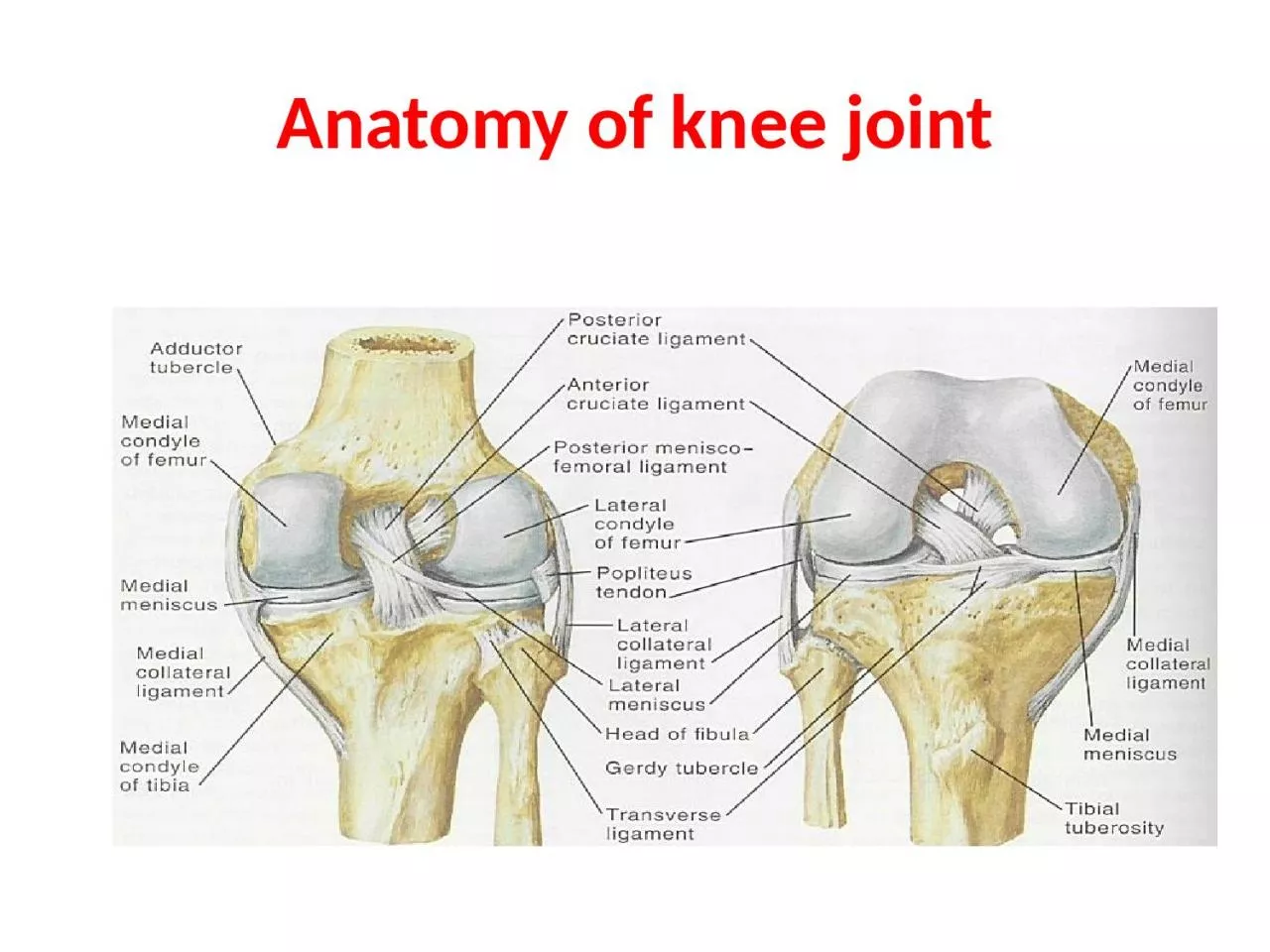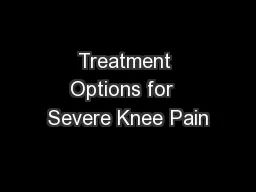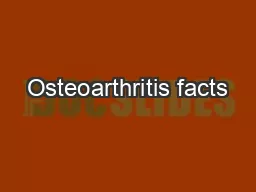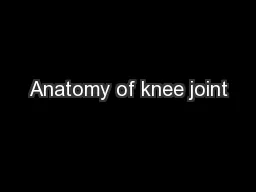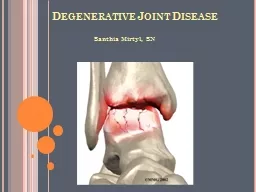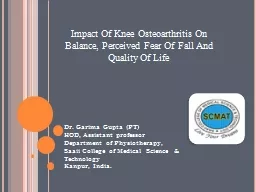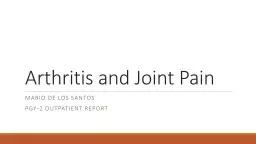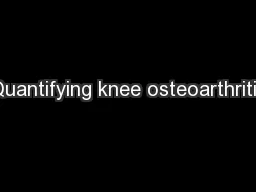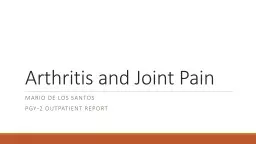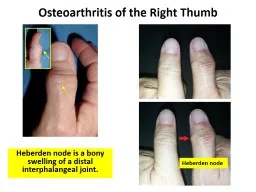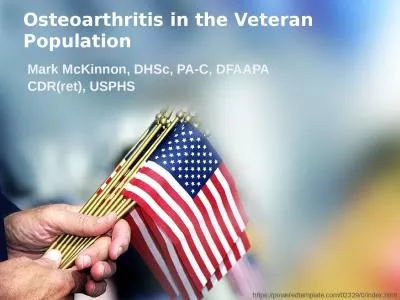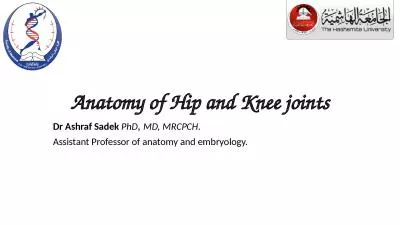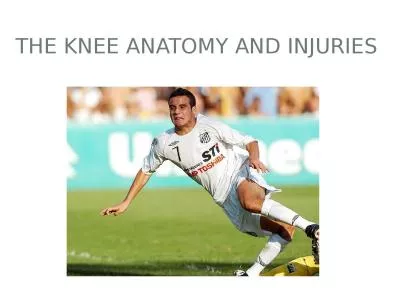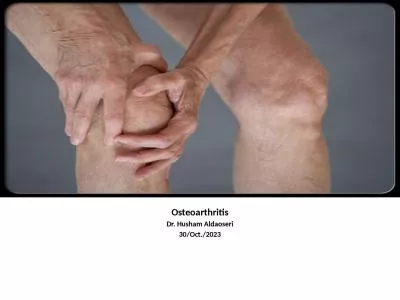PPT-Anatomy of knee joint OSTEOARTHRITIS
Author : SugarAndSpice | Published Date : 2022-08-01
The knee is the commonest of the large joints to be affected by osteoarthritis Often there is a predisposing factor secondary injury to the articular surface a
Presentation Embed Code
Download Presentation
Download Presentation The PPT/PDF document "Anatomy of knee joint OSTEOARTHRITIS" is the property of its rightful owner. Permission is granted to download and print the materials on this website for personal, non-commercial use only, and to display it on your personal computer provided you do not modify the materials and that you retain all copyright notices contained in the materials. By downloading content from our website, you accept the terms of this agreement.
Anatomy of knee joint OSTEOARTHRITIS: Transcript
Download Rules Of Document
"Anatomy of knee joint OSTEOARTHRITIS"The content belongs to its owner. You may download and print it for personal use, without modification, and keep all copyright notices. By downloading, you agree to these terms.
Related Documents

